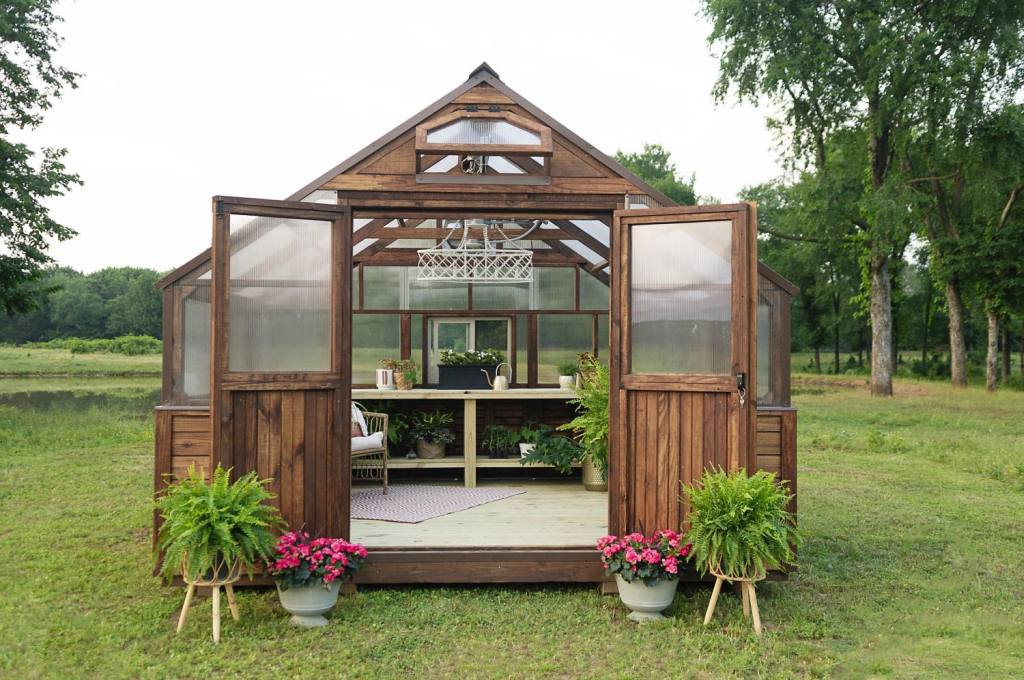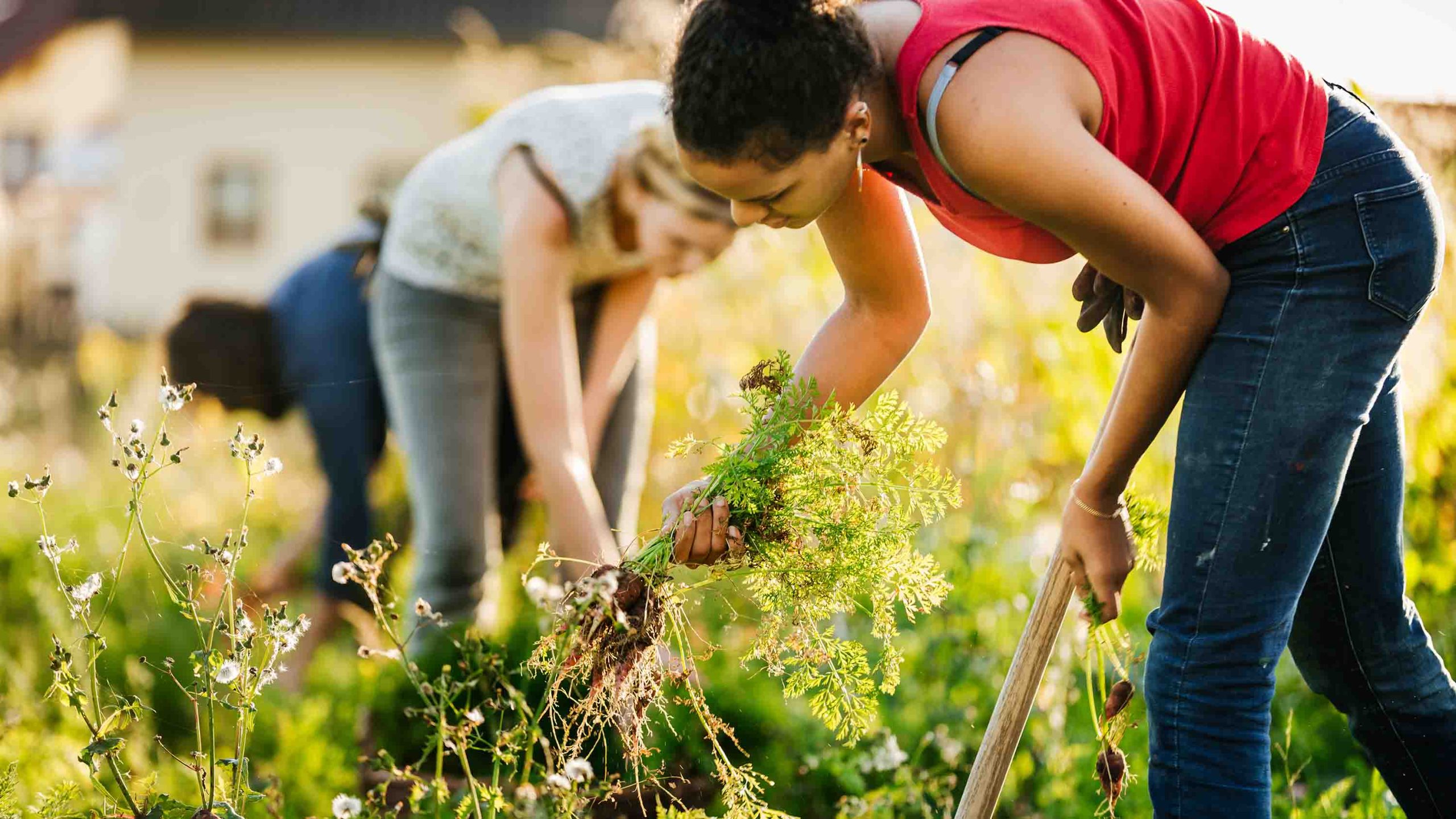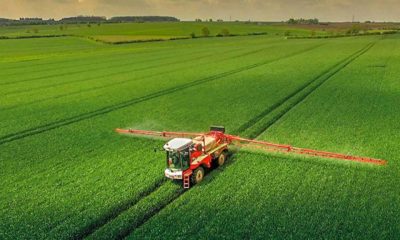Lifestyle
The Most Important Benefits Of A Greenhouse

Growing your own fruits, vegetables, and flowers can be incredibly rewarding, but outdoor gardening comes with its challenges. Weather conditions, pests, and unpredictable climate changes can all hinder your gardening efforts. That’s where a greenhouse comes in. A greenhouse provides a controlled environment that protects plants from the elements, allowing you to cultivate a variety of crops throughout the year. Whether you’re an experienced gardener or just starting, the benefits of a greenhouse can greatly enhance your gardening experience.
Extended Growing Season
One of the most significant advantages of having a greenhouse is the ability to extend your growing season. Without the limitations imposed by weather, you can start planting earlier in the spring and continue harvesting well into the fall or even winter. The controlled environment inside a greenhouse means that you can maintain optimal temperatures for plant growth, regardless of the external climate.
This extended growing season allows for greater productivity. You can plant multiple cycles of crops, increasing your yield and variety. Additionally, you can grow plants that typically wouldn’t thrive in your local climate. Whether you’re looking to cultivate tropical plants, start seedlings early, or grow fresh vegetables year-round, a greenhouse makes it possible. This flexibility can significantly increase the efficiency and enjoyment of your gardening efforts.
Having access to fresh produce throughout the year is not only convenient but also contributes to a healthier lifestyle. You’re able to enjoy seasonal fruits and vegetables even during the off-season, ensuring that your diet remains varied and nutritious. This is particularly beneficial for those who prefer to grow organic produce, as you have full control over what goes into your plants.
Protection from Pests and Harsh Weather
Another critical benefit of a greenhouse is the protection it offers against pests and harsh weather conditions. Outdoor gardens are vulnerable to a range of threats, from insects and rodents to heavy rain, frost, and strong winds. These factors can quickly damage or destroy your crops, leading to disappointing yields and wasted efforts.
A greenhouse creates a barrier between your plants and these external threats. The enclosed space prevents pests from reaching your crops, reducing the need for chemical pesticides and allowing you to maintain an organic garden. Moreover, the stable environment inside the greenhouse shields your plants from unexpected weather changes, such as late spring frosts or summer storms, which can otherwise be devastating.
By controlling the environment, you can also manage humidity levels, ensuring that your plants receive the right amount of moisture without the risk of overwatering or drought. This control over the growing conditions results in healthier plants, higher yields, and less stress for you as a gardener. Additionally, protecting your plants from pests and harsh weather reduces the need for interventions, making gardening more sustainable and enjoyable.

Year-Round Gardening
For those who are passionate about gardening, the ability to garden year-round is perhaps the most appealing benefit of a greenhouse. Seasonal changes and winter months can be frustrating for gardeners who have to wait for the right conditions to start planting. A greenhouse eliminates this problem by providing a controlled environment where you can garden regardless of the season.
With a greenhouse, you can grow a variety of plants even during the coldest months. This is particularly advantageous for those living in areas with harsh winters, where outdoor gardening isn’t feasible for several months of the year. The warmth and protection provided by a greenhouse allow you to cultivate a wide range of crops, from leafy greens and herbs to flowers and even exotic plants that wouldn’t survive outdoors.
Year-round gardening also means you can continuously experiment with different plants and growing techniques. Whether you’re interested in hydroponics, aquaponics, or traditional soil gardening, a greenhouse gives you the space and opportunity to try out new methods without worrying about external factors. This continuous learning and experimentation can be incredibly fulfilling, allowing you to expand your gardening skills and knowledge.
Better Control Over Growing Conditions
A greenhouse offers unmatched control over the growing conditions, which is essential for achieving optimal plant growth. Temperature, humidity, light, and ventilation can all be adjusted to suit the specific needs of your plants. This level of control is particularly important for plants that require specific conditions to thrive, such as orchids, tomatoes, or peppers.
You can install various systems in your greenhouse to monitor and regulate these conditions. For example, heating systems can maintain warmth during cold nights, while ventilation systems can ensure proper air circulation and prevent overheating during hot days. Humidity can be controlled with misters or dehumidifiers, depending on the needs of your plants. Additionally, shading systems can be used to filter the amount of sunlight entering the greenhouse, protecting sensitive plants from excessive light.
This ability to fine-tune the environment results in healthier, more vigorous plants. When you have control over the growing conditions, you can prevent many common problems, such as mold, mildew, and nutrient deficiencies. The result is a more productive garden with fewer setbacks, making your gardening experience more rewarding.
Conclusion
The benefits of a greenhouse are numerous and can greatly enhance your gardening experience. From extending the growing season to providing protection from pests and weather, a greenhouse allows you to cultivate a wide variety of plants year-round. With better control over growing conditions, you can ensure healthier plants and higher yields, making the investment in a greenhouse well worth it. Whether you’re a seasoned gardener or just starting out, a greenhouse can provide the ideal environment to nurture your gardening passion. For more information on greenhouse gardening and to explore the best options for your needs, visit our website and start your journey toward a more productive and enjoyable gardening experience. A well-maintained greenhouse not only improves your garden’s output but also brings you closer to nature, offering a serene and fulfilling hobby that can be enjoyed throughout the year.
Lifestyle
The Evolving Fabric of Society: Navigating Change in the 21st Century

Society is not a static structure — it is a living, evolving network of relationships, values, institutions, and cultural expressions that reflect the time and context in which people live. As we progress further into the 21st century, the rapid pace of technological advancement, cultural exchange, and global events has reshaped how we connect, communicate, and coexist.
This evolution brings both opportunities and challenges. From shifts in family dynamics and education to the role of technology and civic engagement, today’s society is a complex ecosystem that demands reflection, adaptation, and inclusive participation. In this article, we explore key trends shaping society today and how individuals and communities can respond to ensure a more equitable and cohesive future.
The Changing Nature of Community
Traditionally, community was defined by geography — neighborhoods, towns, or villages where people lived and interacted face-to-face. But in today’s world, community has expanded to include digital spaces, interest-based groups, and global networks. While this expansion has opened doors to diversity and collaboration, it has also created new challenges around identity, isolation, and trust.
Many people now form relationships through online platforms, social media groups, and virtual events. These communities offer incredible opportunities for support and learning but can also lead to echo chambers, misinformation, and a weakening of local engagement.
Rebuilding meaningful connection requires balancing digital and physical interaction. Local initiatives — from community gardens to neighborhood events — play a critical role in strengthening civic ties and building resilience in the face of global uncertainty.
Technology and Society: Double-Edged Innovation
Technology has dramatically transformed how society functions. From smartphones and AI to social media and digital finance, these tools have made information, communication, and services more accessible than ever before. But while technology offers convenience and efficiency, it also raises ethical, social, and economic questions.

On one hand, tech has democratized knowledge, given marginalized groups a voice, and enabled global collaboration. On the other, it has fueled privacy concerns, digital addiction, and job displacement due to automation.
As artificial intelligence, facial recognition, and biotechnology continue to advance, society must actively engage in discussions about data rights, surveillance, algorithmic bias, and digital literacy. Citizens, educators, and policymakers need to ensure that technological progress aligns with human values and social equity.
Education and Equity in Modern Society
Access to quality education remains a cornerstone of a thriving society. Yet disparities in education continue to mirror broader inequalities — influenced by income, race, geography, and political will. The COVID-19 pandemic exposed and deepened many of these educational gaps, with millions of students facing challenges in remote learning due to lack of devices, internet access, or support systems.
Modern society must embrace inclusive and adaptive education systems that prepare students not only with academic skills but also with emotional intelligence, critical thinking, and global awareness. Programs that support early childhood education, vocational training, and adult learning are essential for lifelong development and economic participation.
Efforts to reform curricula to reflect cultural diversity, social justice, and sustainability are also gaining momentum. Education must evolve to meet the realities of our interconnected, diverse, and rapidly changing world.
The Role of Media and Public Discourse
Media — both traditional and digital — plays a powerful role in shaping public opinion, cultural norms, and political discourse. In a world flooded with information, media literacy has become essential to distinguish credible sources from misinformation and propaganda.
While social media platforms have empowered citizens to share their voices and mobilize for causes, they have also contributed to the polarization of society, with algorithm-driven content often reinforcing existing biases.
Responsible journalism, transparent fact-checking, and public education about digital citizenship are crucial to preserving a healthy, informed society. Open dialogue, civil debate, and the protection of press freedom remain vital for democratic societies.
Civic Engagement and Social Movements
One of the most encouraging trends in contemporary society is the rise of grassroots activism and civic engagement. Movements like Black Lives Matter, climate strikes, women’s marches, and campaigns for LGBTQ+ rights have galvanized millions, especially youth, to participate in the democratic process and demand social change.
These movements underscore the importance of representation, equity, and justice. They also highlight the need for structural reform in areas such as policing, healthcare, environmental policy, and voting rights.
In an era where trust in institutions is declining, restoring faith in governance and civil society requires transparency, accountability, and inclusive participation. Education, open government initiatives, and accessible civic platforms can empower more people to engage with the systems that shape their lives.
Diversity, Inclusion, and Social Cohesion
Modern societies are increasingly multicultural, multilingual, and multiethnic. Embracing this diversity requires more than just tolerance — it calls for active inclusion, equal opportunity, and the dismantling of systemic barriers that prevent full participation.
Workplaces, schools, and public institutions are gradually adopting diversity and inclusion initiatives that recognize the value of different perspectives and experiences. This is not only ethically important but also contributes to innovation, productivity, and social cohesion.
However, inclusion must go beyond corporate checklists or superficial representation. It must involve anti-discrimination policies, cultural sensitivity training, equitable hiring practices, and support for marginalized communities.
Mental Health and the Social Fabric
As mental health challenges rise across age groups, particularly among youth and working adults, society is being forced to confront the emotional well-being of its members. Social isolation, economic pressure, and the relentless pace of modern life contribute to widespread anxiety, depression, and burnout.
Removing stigma around mental health and ensuring access to care are essential. Schools, employers, and communities must promote mental wellness as part of overall health, investing in counseling, support systems, and awareness programs.
A healthy society is one where empathy, understanding, and support are prioritized, not just for physical needs but also for emotional resilience.
The Climate Crisis: A Collective Responsibility
No discussion about modern society is complete without acknowledging the climate crisis. Environmental degradation, extreme weather, and resource depletion pose existential threats not just to ecosystems but to the very foundations of civilization.
Society must transition toward sustainability, rethinking consumption, energy use, and waste management. This includes promoting renewable energy, sustainable agriculture, and conservation efforts, as well as educating citizens about climate action.

Individuals, governments, and businesses all have a role to play in creating a society that respects the planet and prioritizes long-term ecological balance.
Conclusion: Building a Society for the Future
Today’s society is a mosaic of challenges and possibilities. From technological innovation and demographic shifts to political activism and cultural diversity, we are living in a time of profound transformation.
To navigate this complexity, we must embrace collaboration, empathy, and critical thinking. We need inclusive policies, resilient communities, and education that empowers people to adapt and lead.
Above all, we must remember that a strong society is not defined by its economy or institutions alone — but by how it treats its people, protects its planet, and prepares for the generations to come.
Lifestyle
The Changing Fabric of Society: How Communities Are Adapting in a Modern World

Society is constantly evolving. What defines a community—its values, traditions, and ways of connecting—rarely stays the same for long. Driven by technology, cultural shifts, and global challenges, today’s social landscape looks dramatically different from that of just a few decades ago. As digital platforms reshape communication, workplaces become more flexible, and people rethink their priorities, the question arises: how do we build strong, connected societies in an era of rapid change?
The answer lies in understanding the forces shaping our communities and learning how to adapt while preserving the bonds that hold us together.
Technology: The Double-Edged Sword of Connection
Technology is one of the most powerful forces redefining modern society. Social media and digital communication allow us to stay connected across continents, share ideas instantly, and amplify voices that might otherwise go unheard. Online platforms have given rise to movements for social change, new forms of education, and opportunities for collaboration that transcend borders.
However, this hyper-connectivity also comes with challenges. While people are more “connected” than ever, studies show that feelings of loneliness and social isolation are rising. Digital interactions often lack the depth of face-to-face connections, and the constant exposure to curated online lives can lead to anxiety, comparison, and polarization.
To build healthier societies, individuals and communities must strike a balance—embracing technology as a tool for connection and progress while prioritizing genuine, in-person interactions and fostering empathy in digital spaces.
Changing Work and Community Dynamics
The way people work—and by extension, the way they relate to their communities—is shifting dramatically. Remote and hybrid work models, accelerated by the COVID-19 pandemic, have altered traditional notions of the workplace. While these changes offer flexibility and better work-life balance for many, they can also weaken the sense of camaraderie and shared purpose once found in physical workplaces.

Communities are adapting by finding new ways to connect outside of work. Local events, co-working spaces, and hobby-based groups help fill the social gap created by remote work. These spaces not only combat isolation but also strengthen local economies and cultural ties.
Society is also grappling with questions about work-life balance, equity, and access. Flexible schedules and digital tools create opportunities for many, but they can also deepen inequalities if access to technology and remote work benefits isn’t evenly distributed. Addressing these disparities is critical to maintaining a cohesive, fair society.
Diversity and Inclusion: Building Stronger Communities
Modern societies are more diverse than ever before, encompassing a wide range of cultures, languages, and perspectives. This diversity is a source of strength, fostering creativity, innovation, and resilience. Communities that embrace inclusivity tend to thrive, benefiting from the exchange of ideas and experiences.
However, diversity also brings challenges, particularly when it comes to fostering understanding and combating discrimination. Education, open dialogue, and community-led initiatives are key to bridging cultural divides. By promoting empathy and ensuring equal opportunities, societies can transform diversity from a challenge into a powerful driver of unity and growth.
The Role of Mental Health in Society
Mental health, once a taboo topic, has become a central concern in conversations about societal well-being. Rising rates of anxiety, depression, and burnout highlight the importance of emotional resilience and access to support systems.
Communities are beginning to recognize that strong societies aren’t just built on economic or physical health—they also depend on the mental well-being of their members. Schools, workplaces, and local organizations are incorporating mental health education, counseling services, and mindfulness practices to create environments where individuals can thrive emotionally as well as socially.
Addressing mental health collectively not only supports individuals but also strengthens the overall fabric of society, fostering compassion and understanding across communities.
Environmental Awareness and Social Responsibility
Climate change and environmental concerns are uniting communities around shared goals. More individuals are recognizing the societal impacts of environmental degradation—ranging from economic instability to health crises—and are working together to create sustainable solutions.
Local initiatives like community gardens, recycling programs, and clean-energy projects are bringing people together while promoting environmental responsibility. On a global scale, movements advocating for sustainability and corporate accountability are gaining traction, proving that collective action can spark meaningful change.
These initiatives also highlight an important shift in societal values: a growing recognition that individual actions contribute to a collective future, and that true progress must balance human needs with environmental stewardship.
Rebuilding Social Bonds in an Age of Division
Despite growing awareness and collective efforts, many societies are grappling with division—political polarization, cultural conflicts, and economic disparities. These fractures can weaken trust and make it harder for communities to work toward shared goals.
Rebuilding social bonds requires intentional action. Promoting dialogue across differences, supporting local initiatives that bring people together, and prioritizing shared values like fairness, empathy, and respect can help bridge divides. Volunteering, civic engagement, and cultural exchanges all provide pathways for strengthening trust and understanding.
Ultimately, strong societies are built not by erasing differences but by finding common ground and learning to value diverse perspectives.

The Future of Society: Adapting and Thriving
As societies continue to evolve, flexibility and innovation will be crucial. Future communities are likely to be shaped by:
-
Hybrid lifestyles, blending digital and in-person interactions to maximize convenience and connection.
-
Greater focus on well-being, with mental and physical health prioritized alongside economic growth.
-
Localism and globalism coexisting, as communities support local businesses and traditions while staying connected to global networks.
-
Youth-driven change, as younger generations push for inclusivity, sustainability, and new models of governance and engagement.
These trends suggest that while society faces significant challenges, it also has unprecedented opportunities to build stronger, more resilient communities.
Conclusion: Shaping Society Together
Society is not a static entity—it’s a living, breathing system shaped by the choices, values, and actions of its members. In an era defined by technological advancement, cultural shifts, and global challenges, the task of building connected, resilient communities falls to all of us.
By embracing diversity, prioritizing mental health, using technology responsibly, and fostering genuine human connections, we can create societies that not only withstand change but thrive because of it. The future of society depends on our ability to come together—not as isolated individuals, but as active, compassionate members of a shared world.
Lifestyle
The Changing Fabric of Modern Society: Navigating Connection, Identity, and Responsibility in the 21st Century

In the 21st century, society is evolving faster than ever before. Technological advancement, cultural diversity, shifting family structures, and new definitions of work and community are transforming how people live, interact, and understand themselves. The modern world has blurred traditional boundaries — between online and offline life, private and public space, and even between individual and collective responsibility. As we navigate this complex landscape, it’s crucial to understand the forces shaping today’s social fabric and the implications for human connection, identity, and shared responsibility.
1. The Age of Digital Connection — and Disconnection
Technology has revolutionized communication. In a single decade, social media, smartphones, and instant messaging have become the main modes of interaction for billions of people. Platforms such as X (formerly Twitter), Instagram, and TikTok shape not only how people communicate but also how they perceive reality. The digital world allows for global dialogue — individuals from opposite sides of the planet can connect instantly, exchange ideas, and even collaborate on social causes.
However, the paradox of this connectivity is evident. While digital platforms bring people closer in theory, they can also isolate individuals emotionally. Online echo chambers amplify divisions, misinformation spreads faster than ever, and the pressure of maintaining a curated digital identity often leads to stress and anxiety. Many sociologists argue that while society is more connected than ever technologically, genuine human connection is declining. The challenge ahead lies in finding balance — using technology as a tool for unity, rather than as a source of division or detachment.
2. The Redefinition of Identity in a Globalized World
Globalization has reshaped how people think about identity. National, cultural, and personal boundaries are increasingly fluid. Migration, multiculturalism, and digital media have exposed individuals to an array of perspectives, traditions, and lifestyles. For many, this offers freedom — the ability to define oneself beyond geography or convention.
Yet, this freedom can also create confusion. In a world where everything is connected, individuals often struggle to find a stable sense of belonging. Questions of identity — who we are, what we believe, and where we belong — have become central social issues. Movements advocating for gender equality, racial justice, and LGBTQ+ rights have grown stronger, reflecting society’s ongoing efforts to embrace inclusivity and self-expression.
At the same time, backlash and polarization also arise when groups feel their traditional values are being challenged. The tension between progress and preservation has become one of the defining features of modern societies. Navigating this requires empathy, dialogue, and education — tools that can bridge divides rather than deepen them.

3. Work, Economy, and the New Social Order
The structure of work has undergone a dramatic shift. The rise of the gig economy, remote work, and automation has altered not only how people earn a living but also how they define purpose and success. In the past, stable jobs and long-term careers formed the backbone of many societies, giving individuals a clear social role and sense of identity.
Today, flexibility, independence, and innovation are valued — but they come at a cost. Many workers face insecurity, irregular income, and the erosion of traditional labor rights. Society must adapt to ensure that technological progress does not leave people behind. Concepts like universal basic income, lifelong education, and the four-day workweek are being debated worldwide as potential solutions to modern economic instability.
Moreover, as artificial intelligence and automation expand, societies must redefine what it means to contribute. If machines handle most tasks, the human role may shift toward creativity, empathy, and social care — qualities that technology cannot replicate. A healthy future society will need to balance efficiency with humanity.
4. The Shifting Dynamics of Family and Community
Family, once considered the cornerstone of society, is evolving in structure and definition. Traditional nuclear families now exist alongside single-parent households, blended families, same-sex couples, and child-free lifestyles. This diversity reflects changing social values — greater acceptance, gender equality, and individual freedom.
However, it also raises questions about support systems. As people live more independently, the role of community becomes increasingly vital. In many urban areas, loneliness and social isolation are rising, particularly among older adults and young professionals. Community programs, local engagement, and intergenerational initiatives are essential to rebuilding the sense of collective belonging that industrialized societies often lose.
Interestingly, digital communities are emerging as new forms of belonging. Online support groups, forums, and shared-interest spaces often substitute for physical neighborhoods. While these can be positive, they also need to be approached critically, ensuring they promote empathy and constructive dialogue rather than hostility or misinformation.
5. Social Responsibility in the Age of Global Challenges
The 21st century has also ushered in new global responsibilities. Issues like climate change, migration, and inequality are no longer confined to national borders. The pandemic underscored how deeply interconnected humanity is — and how the actions of individuals can have worldwide consequences.
As awareness grows, citizens and corporations alike are being called to act responsibly. Sustainable living, ethical consumerism, and corporate social responsibility are becoming central social values. Younger generations, in particular, are driving this transformation. Surveys show that Gen Z and Millennials prioritize social justice, environmental protection, and mental well-being more than previous generations.
However, activism alone is not enough. Structural change requires cooperation between governments, businesses, and communities. A socially responsible future depends on collective participation — recognizing that every individual’s choices contribute to the broader human ecosystem.
6. Education and the Rise of Social Awareness
Education remains one of society’s most powerful tools for change. Modern education extends beyond academic achievement — it now encompasses emotional intelligence, cultural literacy, and ethical awareness. Schools and universities are increasingly tasked with preparing students not only for jobs but for citizenship in a diverse, global world.
Digital literacy, for example, is essential to combat misinformation and promote critical thinking. Likewise, social and emotional learning helps individuals navigate complex interpersonal dynamics and build resilience. The education system’s role in shaping responsible, informed citizens is more critical now than ever before.

7. The Future of Society — Building Connection and Purpose
Looking ahead, society stands at a crossroads. The next decades will determine whether technology, globalization, and diversity strengthen our collective humanity or erode it. To build a thriving social future, three principles will be key: empathy, adaptability, and shared purpose.
Empathy helps bridge cultural and ideological divides. Adaptability allows communities to embrace change without losing their essence. And shared purpose — the belief that we are working toward something greater than ourselves — restores meaning in an increasingly complex world.
In essence, the story of modern society is one of transformation. Every generation faces its unique challenges, but the current era offers unprecedented opportunities for progress and understanding. If we can harness the tools of connection wisely, respect the richness of diversity, and uphold our collective responsibility, the 21st century may well become not just an age of change — but an age of shared human growth.
-

 Technology2 years ago
Technology2 years agoNew Agriculture Technology in Modern Farming
-

 Food1 year ago
Food1 year agoFighting Restaurant Food Waste with Technology
-

 Lifestyle1 year ago
Lifestyle1 year agoBackpack Essentials for Returning to School
-

 Education1 year ago
Education1 year agoTips To Support Underserved Students
-

 Food1 year ago
Food1 year agoHow to Get Enough Protein Without Meat
-

 Education2 years ago
Education2 years agoInnovative Learning Strategies for the Digital Age
-

 Food1 year ago
Food1 year agoThe Role of Macronutrients in a Balanced Diet
-

 Fitness1 year ago
Fitness1 year agoFueling Your Body for Optimal Performance




